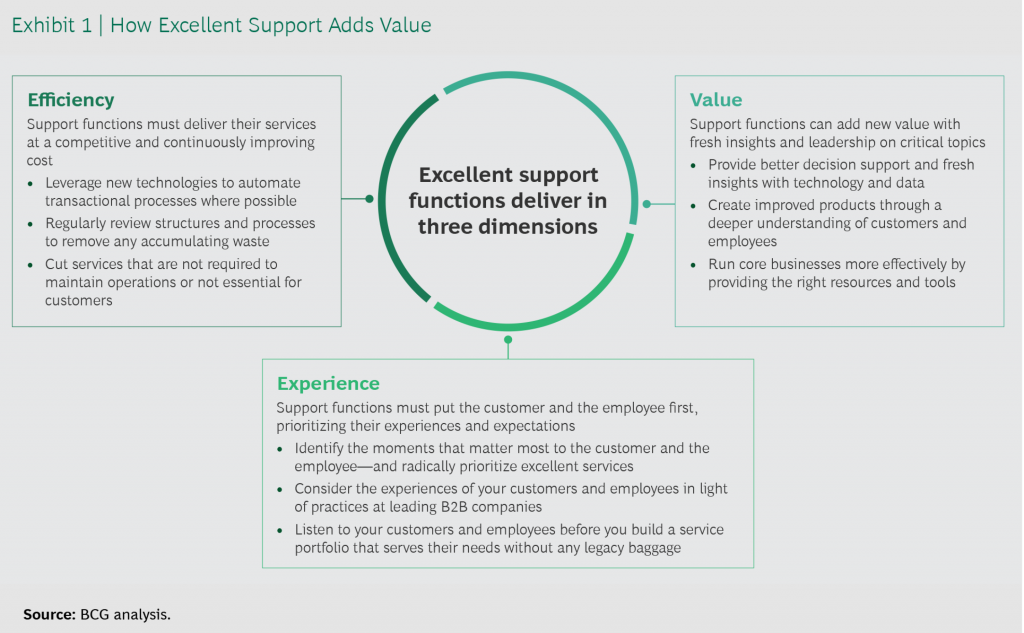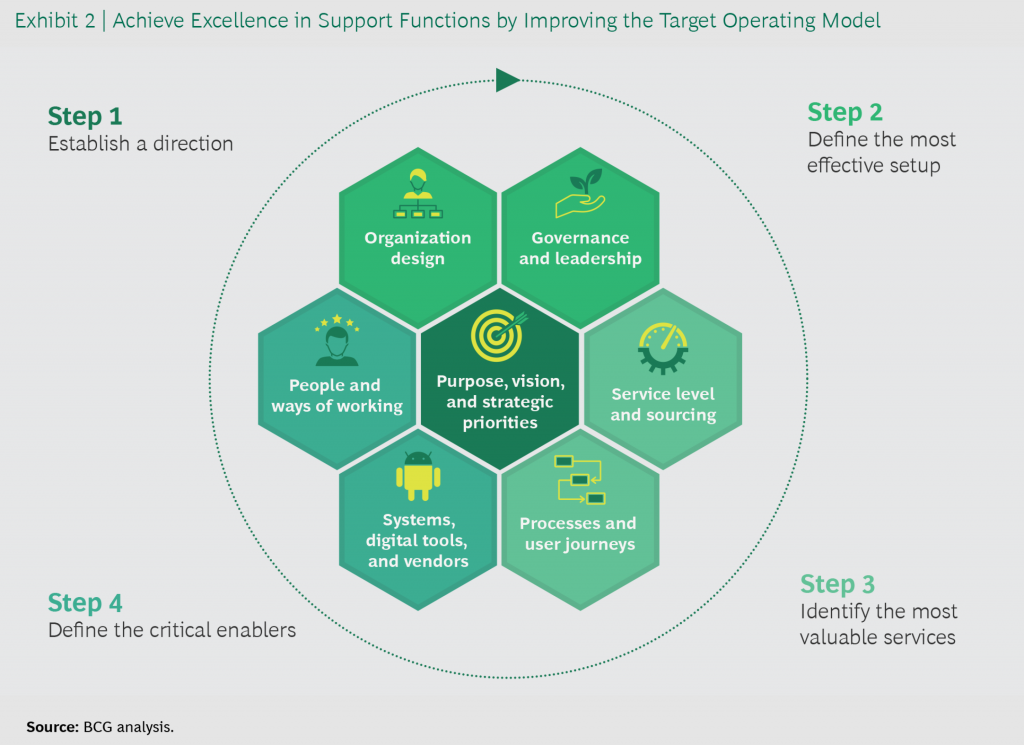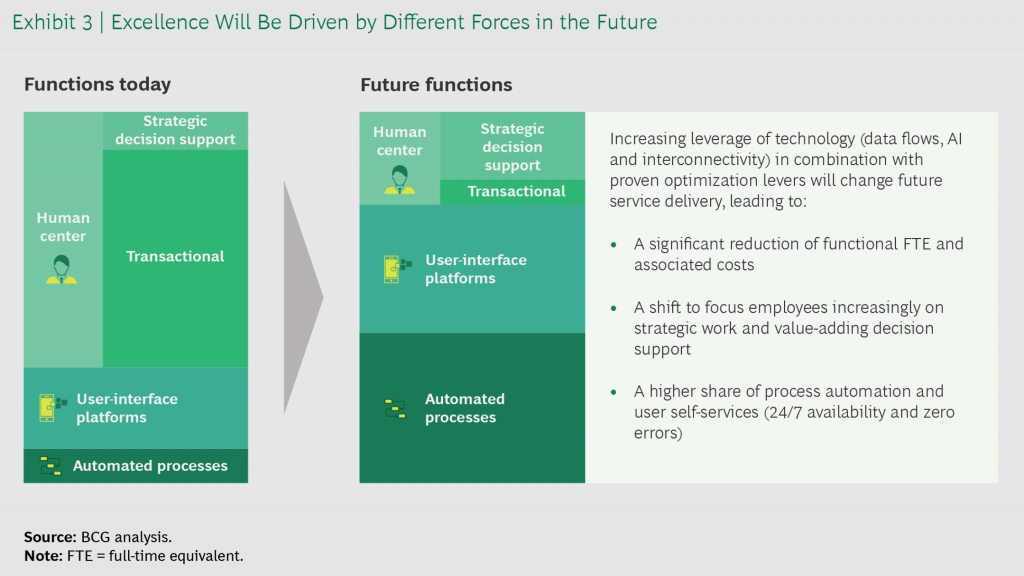Redesigning your businesses support functions can unlock hidden value during recessionary economic periods
For the past 7 months companies of all sizes and industries (some sectors such as travel, entertainment, hospitality have been affected more) have been facing enormous amounts of pressure, economic uncertainty, changing consumer behaviors, increasing expense issues, decreased sales revenue as well as rapid technological change. And business managers are searching for a fresh competitive edge – ideally without having to lay down a giant up front investment. According to a recent report from Altimeter about the 2020 State of Digital Transformation stated that operations support, agility, and revenue are top priorities given COVID-19.
And with many firms already facing mounting expenses due to the Covid-19 pandemic, investor appetite for new ventures is limited, and for many companies it is not best time to be entering new markets or launching new product lines, so what tools are left in the tool chest? Well the esteemed management consulting firm Boston Consulting Group (BCG) has an idea, which they published an article titled “Rethink Support Functions to Lead Through Tough Times” where it suggests that a low cost strategy that can work even in a down market cycle is to increase the performance of support functions, also known sometimes as corporate or business functions (such as finance, human resources, IT, procurement, legal, real estate and facilities management, etc) BCG claims that many companies make the mistake of dismissing it as a cost center, but they make the argument that “most companies’ support functions now represent a tremendous, multifaceted opportunity.” Mckinsey and Co, another major consulting firm states “in an environment of increased globalization, technology disruption, and cost pressures, they also represent an enormous opportunity. By developing these functions to play an increasingly strategic role it can deliver cost savings and higher customer satisfaction and also provide a more responsive platform for driving transformation. Another way of thinking about this is basically optimizing your company’s operations. How to turn business support into business value.

Transform Business-Support functions
Accelerate your impact by examining performance and efficiency within and across functions such as finance, HR, procurement, legal, and others.
Why Should Companies Focus on Support Functions?
In a Harvard Business Review article published in 2019, about managing functions and one CEO recently told the author, “Business units do strategy; functions support them.” That view feels instinctively right to many managers. A company exists to create products and services for customers, so the business units, which do the creating and serving, rightly drive corporate strategy. But we should not forget that support functions serve customers too: the business units that use their services. Support functions that unconsciously adopt the servile strategy try to be all things to all people. As a result, they wind up overworked and underwhelming. They become undifferentiated and reactive, losing their ability to influence the company and access resources.
According to the BCG article, business support functions tend to be seen as providers of necessary but generally undifferentiated services with little competitive significance, so they are often undervalued by managers. The authors suggest that executives often view them as isolated units, in spite of the fact that at many corporations, “ support functions represent 10% to 25% of full-time labor costs and a substantial share of selling, general, and administrative expenses.”
Advanced support functions can assist businesses in reducing
excess costs and take greater advantage of opportunities.
These management consultant firms feel that the value you can achieve from improving support functions can far outweigh their share of the budget. Basically it is optimizing your operations. And having an optimized functional level strategy provides the c-suite with a more clear perspective of the total company as well as its external business environment and thus it can help to guide transformative company wide changes.
So what does an excellent business support function actually look like?
The BCG article explains that optimized business support functions perform differently. Excellent business support functions do things differently. Take a look at this exhibit 1 graphic chart.

(Image credit: BCG)
Exceptional – value-aware corporate functions provide the data, information, and analysis necessary to make decisions about the right way to pursue a strategic agenda. They also provide the tools needed to execute those decisions. First-rate functions enhance the following three attributes as well.
Efficiency – excellent business support functions deliver their services at competitive and continuously improving cost because they can scale resources to external conditions and respond quickly to supply disruptions. Achieving an excellent functional level strategy can lead to:
- An improvement in service delivery speed of 200% to 300%
- A decline of 80% in error rates
- An overall need for at least 20% fewer full-time employees
Customer Experience – advanced business support functions focus intensely on the customer. Taking insights from customer feedback and best practices for online user experiences, such units strive to deliver flawless service. Their processes are streamlined to meet the needs of both internal and external customers and to evolve easily as those needs change.
Value – optimized support functions unite business strategy, people, and technology to encourage quick and efficient action. By operating with a deep understanding of customers and employees, such functions generate insights that help executives eliminate outdated legacy processes and launch new initiatives that add more value.
No matter what business sector you are in, improving the quality of a corporate support function to a level of excellence can have a strong ripple effect throughout the company. The BCG article mentions a few examples of how they helped some companies do this.
They said that a company with international business units streamlined a disparately organized collection of 60 odd systems and processes, of which most were run by people without specialized capabilities, spanning 30 countries, by developing a new regionally organized group with fewer systems and more experts. The result: improved service with a reduction in cost of 15%.
Another example cited was about a big accounting firm who had an outdated forecasting process that demanded each unit to employ unique data aggregation and forecast-preparation techniques, called for reconciliation at the group level, and necessitated manual forecasts. The firm implemented a new AI-based process that did away with manual data entry and generated group and functional unit forecasts on an ad-hoc basis, resulting in improved forecasting abilities.
Their 3rd example was about a chemical manufacturing business reorganizing its HR unit to better meet the corporation’s long-term needs. By rolling out self-service digital HR systems that employees could use throughout their employment and by developing a long-term staffing strategy, the company laid the foundation for an improved HR function set up to meet both current and future challenges.
How can a company go about implementing support function cost optimization initiatives?
The BCG article layout a framework that businesses can use a 4 step process to upgrade your support functions by helping to define your service goals and ambitions. Here is a chart:

(image credit: BCG)
- Establish a direction – sketching out the vision and strategy as well as the overall design principles and cost ambition for the target state. What is the company’s ambition for the corporate function? How high are you aiming?
- Define the most effective setup – start by defining the total structure, the roles each function will play within it and how its governance works. What would be the best structure and geographic footprint? What would be the most effective governance structure?
- Identify the most valuable services – you should configure the service levels with the importance of the client, and the functional tasks with the most cost-effective technology for their processing. What services add value? What are the best end-to-end process flows
- Define the critical enablers – do research to uncover which skills your workforce will need in order to thrive in the coming years. What tools and technology will be needed to support or automate delivery? What professionals will be needed, and what will be the most effective way for them to work? Where do you need to reinvest in capabilities?
There are a number of critical factors that will determine how successful a company is with implementing this 4 step process. They suggest you start with a baseline of using a diagnostic analysis program to clarify the current state of performance level of each of your corporate functions.and set targets for spending, organization structure, and performance. To have success you must get buy in and collaboration from each business unit’s leaders. If you set up dedicated teams within each unit that you want to improve or redesign, and have them create their own sets of specific blueprints and identify their ultimate service delivery goals. Then, the BCG article suggests creating a small, agile team equipped with the right tools to ensure progress and compliance with defined design principles.
A large portion of the work consists of overhauling older legacy systems and integrating more digital software solutions to improve efficiencies. Firms more and more are using technology to improve operations and business processes, to handle more of the workload in most functions. In human resource departments, for instance, BCG article states that they believe technology will soon handle more than half the work, freeing employees for more strategic tasks while cutting error rates and expenses.

(image credit: BCG)
What about the cost? In the end these support process overhaul initiatives should not only be deficit neutral but also be profitable, as you start to incorporate cloud software tools to eliminate unnecessary procedures and error-prone manual processes by replacing them with more accurate and cost-effective digital systems. Examine and figure out which business-support functions would benefit from digital and automation technologies and plan and implement their use across your organization. Find the right external service providers for your needs—ones that will help you to unlock maximum value from new technology. Digital technology can help companies transform their support functions, leading to cost reductions of 20% to 40%, increased visibility and insights, better cash positions, and increased employee engagement.
Conclusion -better and best
In rough or struggling economic times such as what we are currently facing due to the Covid-19 health pandemic, organizational choices can sometimes end up falling between bad and worse:
- the tradeoffs either buy time but compromise your long-term position or raise your short-term risks but position your firm well for the recovery
- transforming your support functions, however, is an exception
Excellent support functions not only help your firm operate more efficiently now, but they also can give you more control over your company’s processes, more insight into its operations, and more data-supported guidance for your next strategic move. Contact Huckabee CPA is have any questions or you would like a free consultation.






